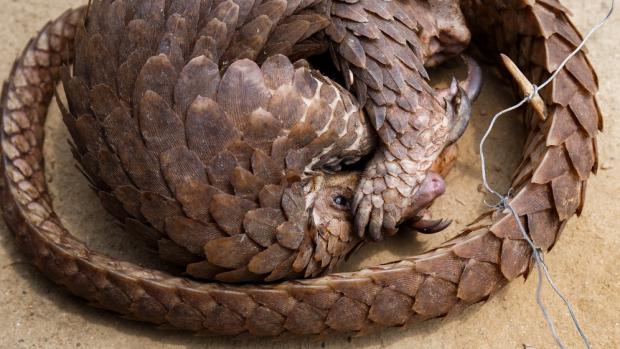China, the coronavirus epidemic and protecting endangered species

On Monday, the Standing Committee of the National People's Congress permanently banned the trade and consumption of wild animals. This decision came on the heels of a temporary ban this January. It was made on the day 79,524 people were confirmed to be infected with coronavirus 2019-nCoV and the number of deaths had risen to 2,627. The reason for the ban is obvious: the ‘Wuhan’ coronavirus infection originated in the wild animal trade, where it was transmitted to humans from an intermediary host – most likely a pangolin – infected by a bat. Moreover, virologists have been giving emphatic warnings about such a scenario for many years.
 Photo: Miroslav Bobek
Photo: Miroslav Bobek
This permanent ban – regardless of how late it comes – is important not only from an epidemiological point of view, but also from the standpoint of animal and nature conservation. The extraordinarily populous and increasingly wealthy China is a truly gigantic consumer of wild animals. The farming of many meat species alone employs a million people(!) and was estimated at $7.1 billion. Overall, according to a 2017 estimate, the breeding of wild animals and the related trade, employed 14 million people and was worth $74 billion. Unfortunately, we can have no illusion about the suffering of the many animals reared and traded in this manner. In relation to maintaining biodiversity, then the hunting of wild animals is even more serious. Due to Chinese demand, this is being played out to a huge extent in a large part of the world, and for many, many species it has led to a sharp drop in their numbers and sometimes to complete extinction.
The newly announced Chinese ban on the trade and consumption of wild animals is therefore an unequivocally positive step. However, it is unlikely that the multitude of problems associated with wild animals can be dealt with in one fell swoop.
In the past the state has explicitly supported the breeding of wild animals and the various partial bans on hunting and trading in wild animals have not always been consistently enforced. Indeed, some Chinese authorities allegedly even tolerated violations of the temporary ban set in January. It is therefore a question of just how vehemently and effectively the permanent ban will be enforced.
Another problem is the fact that it is not an entirely strict ban. It does not apply to aquatic animals or animals which have been bred for a long time. That, of course, dissipates the effect. Above all, it will still be possible to “use wild animals for scientific and medical purposes”. In other words, business as usual, a business that, despite all the regulations and stricter supervision, leads to the extinction of entire species.
And there is one more aspect we cannot forget: there are voices in China saying that, as a precaution, pangolins, bats, snakes, etc., in short, species suspected of being involved in the chain of disease formation and spread in the wild, should be culled.
Despite these doubts, reservations and fears, however, anyone who has at least some knowledge of China and knows the enormous extent of the trade in wildlife and the strength of the local traditions must acknowledge that Monday’s ban is an advance of great significance. We will see what the near and distant future will bring.
For MF Dnes, February 29th, 2020
ZOOPRAHA.CZ
Contacts
- The Prague zoological garden
U Trojskeho zamku 120/3
171 00 Praha 7
Phone.: (+420) 296 112 230 (public relations department)
e-mail: zoopraha@zoopraha.cz
Others








